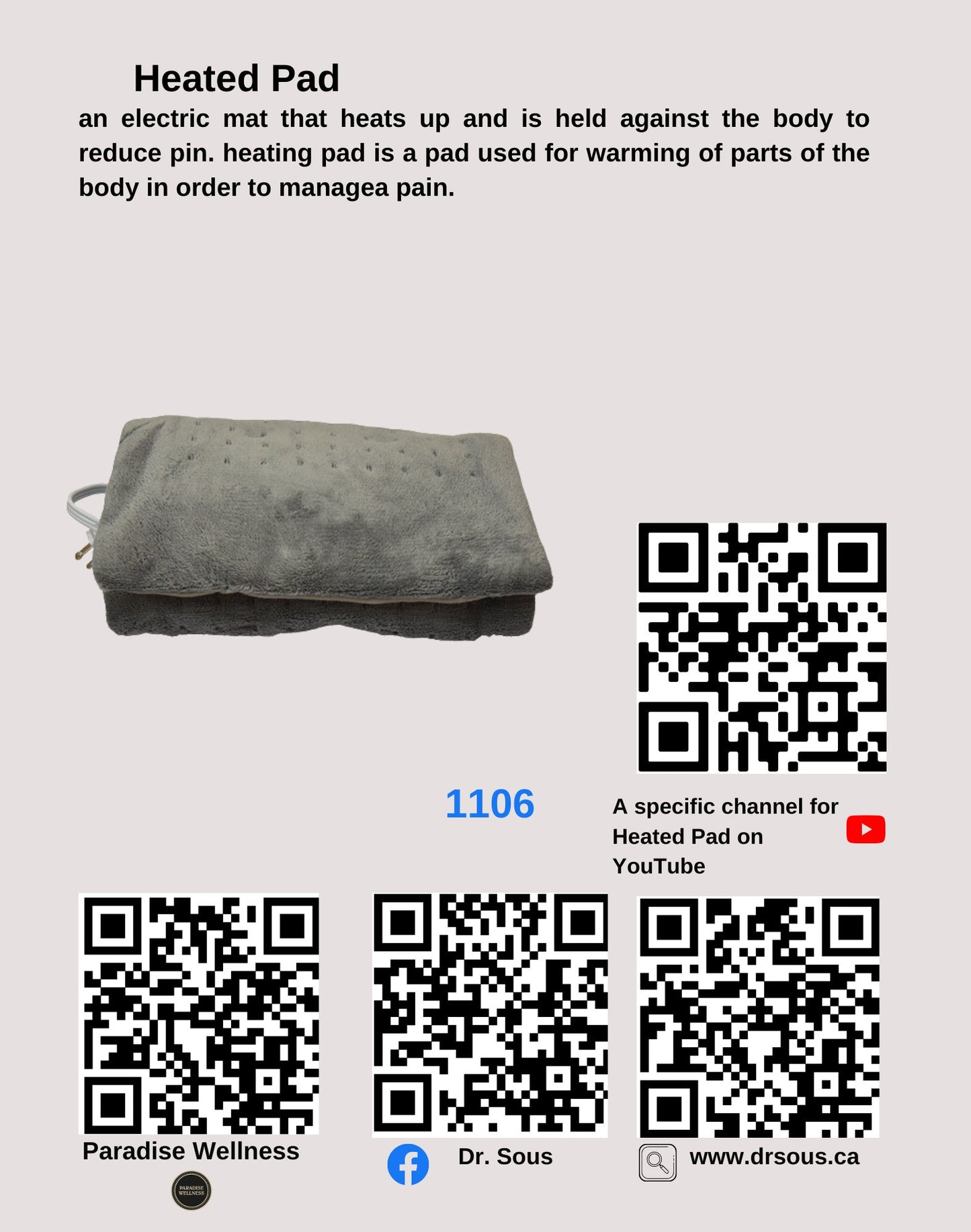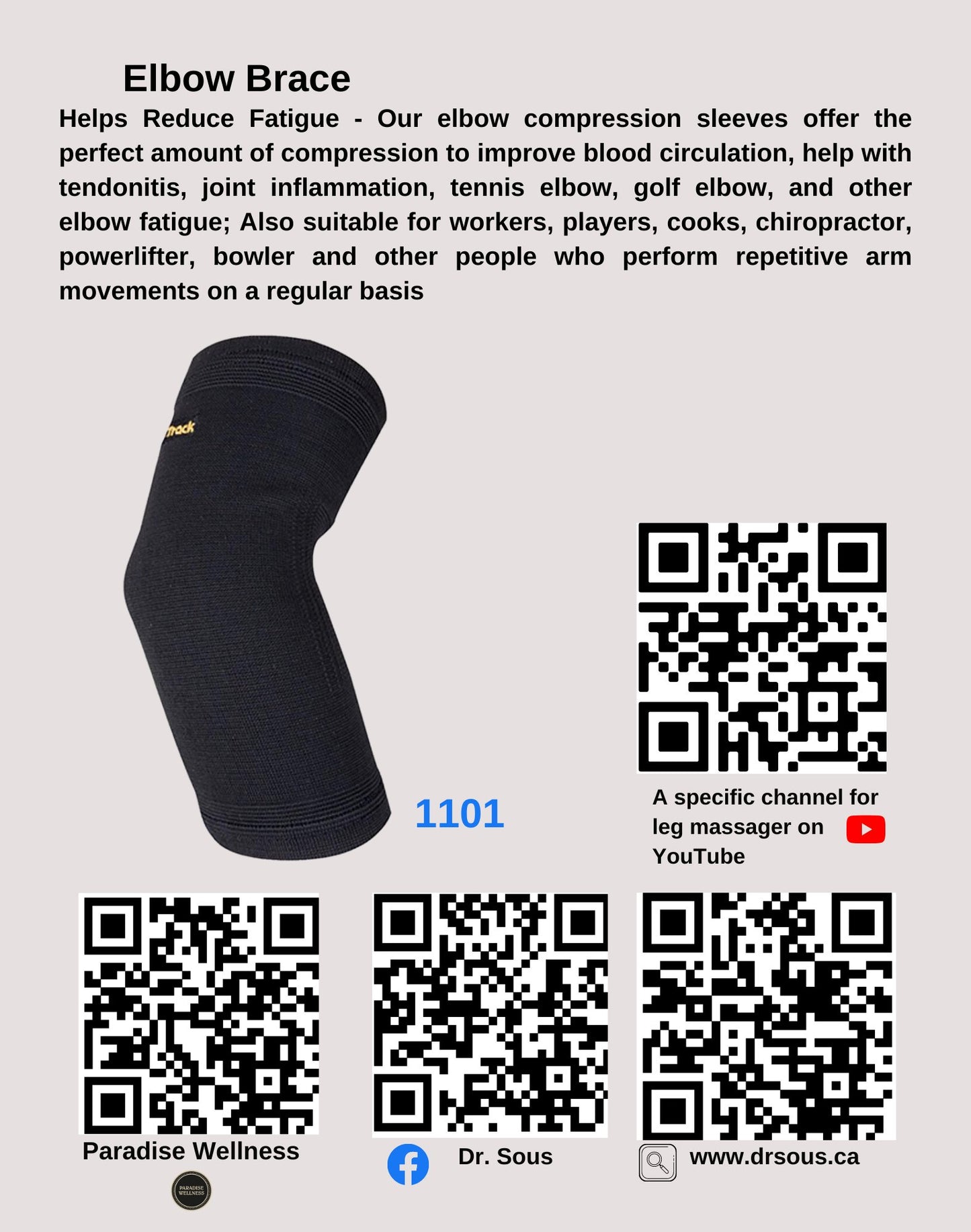3006.3)Elbow & Hand Pain Braces Package, 1) Wrist Brace, 2) Heated Pad, 3) Elbow Brace
3006.3)Elbow & Hand Pain Braces Package, 1) Wrist Brace, 2) Heated Pad, 3) Elbow Brace
Couldn't load pickup availability
DrSous.Ca
3)Elbow & Hand Pain Braces Package
1) Wrist Brace
|
Size |
L (left 25 and right 25) |
|
Specific uses for product |
Arthritis, Pain Relief |
|
Use for |
Hand |
|
Age range (description) |
Adult |
About this item
【Premium Wrist Support】wrist splints feature top-quality breathable material that releases excess heat and moisture while providing supports to stabilize your wrist.
Instant Pain Relief】Two Splints provide a high level of wrist support that provides a tight compression that helps to relieve injury pain.
24-Hours & Multi-Purpose】The wrist brace is comfortable, lightweight, and perfect for multi-purpose use. You can wear them throughout the night, at work, traveling, working out, and more.
Adjust to Fit Your Need】Our carpal tunnel wrist support features adjustable straps that can be used by all ages, for both men and women.
Research Study
Wrist braces are commonly used to provide support, stability, and protection to the wrist joint. They are designed to help relieve pain, reduce inflammation, and prevent further injury to the wrist. In this article, we will explore the definition and purpose of wrist braces, the different types of wrist braces and their uses, as well as the benefits and drawbacks of wearing a wrist brace. Whether you are an athlete, recovering from an injury, or looking to prevent one, understanding the importance of wrist braces can help you make informed decisions about your health and well-being.
Wrist brace is a medical device that is worn on the wrist to provide support, stability, and protection to the wrist joint. According to Liu et al. (2021), the primary purpose of wrist braces is to prevent or alleviate wrist pain, particularly in individuals who engage in repetitive wrist motions, such as typing or playing sports. Wrist braces are also used to treat a variety of wrist injuries, such as sprains, strains, and fractures. They work by immobilizing the wrist joint, which reduces inflammation and allows the injured tissues to heal. In addition, wrist braces can help improve wrist function and range of motion by limiting excessive wrist movement, which can cause further injury or pain. Another benefit of wrist braces is that they can improve grip strength and reduce the risk of dropping objects, which is particularly important for individuals with weak grip or hand tremors. Overall, wrist braces are an effective and non-invasive treatment option for a variety of wrist conditions and injuries, and can significantly improve wrist function and quality of life for individuals who use them.
Wrist braces are commonly used to provide support and stability to the wrist joint. There are several types of wrist braces available in the market, each designed to address specific wrist-related issues. According to Kelly et al. (2015), wrist braces can be classified into four types: immobilizing, functional, prophylactic, and neoprene. Immobilizing braces are designed to limit the movement of the wrist joint and are commonly used in the treatment of wrist fractures or severe sprains. Functional braces, on the other hand, allow for limited movement of the wrist joint while providing support to the area. These braces are commonly used in the treatment of mild to moderate sprains or strains. Prophylactic braces, also known as preventative braces, are designed to protect the wrist joint from potential injuries during physical activities. These braces are commonly used by athletes or individuals who engage in activities that require repetitive wrist movements. Neoprene braces are made of a synthetic rubber material that provides compression and support to the wrist joint. These braces are commonly used in the treatment of mild to moderate wrist injuries or for individuals who require additional support during physical activities. In conclusion, understanding the different types of wrist braces and their uses can help individuals select the appropriate brace to address their wrist-related issues.
Wrist braces have been utilized for a long time as a form of treatment for wrist injuries or as a preventative measure for athletes engaging in high-impact sports that demand repetitive wrist motions. The benefits of wearing a wrist brace are numerous, including reducing pain and inflammation, stabilizing the wrist joint, and improving overall hand function. A study conducted by Stern et al. (1997) found that patients who wore a wrist brace experienced a significant reduction in pain and an improvement in grip strength. Additionally, wrist braces have been found to be highly effective in preventing further injuries, especially for athletes who have a history of wrist injuries. However, wrist braces also have some drawbacks. One major concern is that the constant use of wrist braces can cause muscle atrophy and reduced range of motion. Another drawback is that wrist braces may not be able to provide adequate support for certain types of injuries, such as fractures. Despite these drawbacks, wrist braces remain an effective and affordable treatment option for those with wrist injuries or those who engage in high-impact sports.
In conclusion, a wrist brace is an essential tool for individuals who suffer from wrist injuries or conditions such as carpal tunnel syndrome. It provides support and stability to the wrist joint, allowing the user to perform daily activities without pain or discomfort. With the advancement of technology, wrist braces are now available in different designs and materials to suit the needs of every individual. It is important to consult with a healthcare professional to determine the appropriate wrist brace for your condition and to ensure proper use. Overall, a wrist brace can significantly improve the quality of life for those who suffer from wrist injuries or conditions.
Work Cited
S Liu., K Tang., J Luo., J Yi."A compact soft robotic wrist brace with origami actuators."https://www.frontiersin.org/articles/10.3389/frobt.2021.614623/full
S Kelly., A Paterson., R Bibb."A review of wrist splint designs for additive manufacture."https://repository.lboro.ac.uk/articles/conference_contribution/A_review_of_wrist_splint_designs_for_additive_manufacture/9340523?utm_medium=email&utm_source=transaction
"Commercial wrist extensor orthoses: a descriptive study of use and preference in patients with rheumatoid arthritis."https://onlinelibrary.wiley.com/doi/abs/10.1002/art.1790100105
2) Heated Pad
an electric mat that heats up and is held against the body to reduce pain. heating pad is a pad used for warming of parts of the body in order to manage pain.
3) Elbow Brace
|
Size |
M25, L25 |
|
Usage |
Tennis Elbow, Tendonitis |
|
Age Range |
Adult |
|
Colour |
Black |
About this item
Helps Reduce Fatigue - Our elbow compression sleeves offer the perfect amount of compression to improve blood circulation, help with tendonitis, joint inflammation, tennis elbow, golf elbow, and other elbow fatigue; Also suitable for workers, players, cooks, chiropractor, powerlifter, bowler and other people who perform repetitive arm movements on a regular basis
Designed For Ultimate Elbow Support - Our tennis elbow brace are great for rigorous exercises such as Tennis, Golf, CrossFit, powerlifting, bodybuilding, volleyball, yoga and much more; but also great for daily uses such as typing; NS12 elbow compression sleeves provide the perfect fit for both women and men
Best Elbow Brace - EB20 elbow compression sleeves are made from high-quality and non-slip materials that are comfortable enough to use all day; Enjoy hours of continuous use with premium elbow support without loss of performance or discomfort; The elbow sleeves offer lasting support and excellent help with arthritis and other joint pain
Specialized Design Elbow Brace: High-Quality compression and fashion comfort brace with the latest 3D knitting technology, performance does make a difference in this field; 360-degree stretch for greater flexibility and durability; Superior stitching quality providing long-lasting usage
A Variety Of Options: 5 sizes; each package contains 2 pack elbow compression sleeves, Keep doing exercise at home, drink plenty of water, and stay warm to boost your circulation up and help you stay healthy; Our product is a perfect add-on to your exercise essentials.
Research Study
Elbow injuries are a common occurrence that can happen to anyone, whether you are an athlete or not. In such cases, an elbow brace can be a lifesaver. But, what exactly is an elbow brace? It is a medical device that is designed to support the elbow joint and alleviate pain caused by injuries such as tennis elbow, golfer's elbow, or arthritis. There are various types of elbow braces available in the market, each with a specific purpose. In this article, we will discuss what an elbow brace is, the different types of elbow braces, their uses, as well as the benefits and drawbacks of using them.
An elbow brace is a medical device that is used to provide support and protection to the elbow joint. According to RR Said et al. (2022), elbow braces are an effective treatment option for individuals who suffer from conditions such as tennis elbow or golfer's elbow. These conditions are characterized by pain and inflammation in the elbow joint and are often caused by repetitive strain injuries. Elbow braces work by providing compression to the affected area, which helps to reduce inflammation and promote healing. They also help to stabilize the joint, which can prevent further injury and promote proper alignment of the joint during movement. Elbow braces come in various shapes and sizes and can be made from different materials such as neoprene or elastic. They can also be customized to fit the individual's specific needs and can be worn during various activities such as sports or daily activities. In conclusion, an elbow brace is an essential medical device that can help to alleviate pain and promote healing in individuals who suffer from conditions such as tennis elbow or golfer's elbow.
Elbow braces are commonly used to manage various elbow conditions and injuries. According to RR Said and colleagues, there are different types of elbow braces, each with a unique purpose. One type is the tennis elbow brace, which is designed to alleviate pain and discomfort associated with tennis elbow, a condition characterized by the inflammation of the tendons in the elbow. The tennis elbow brace works by applying pressure to the affected area, thereby reducing strain on the tendons and promoting healing. Another type is the golfer's elbow brace, which is intended to address medial epicondylitis or golfer's elbow. Like the tennis elbow brace, it works by providing compression and support to the affected area. In addition, there are elbow braces that are specifically designed for post-operative use, such as after elbow surgery. These braces are intended to immobilize the elbow joint and promote healing. Moreover, some elbow braces are intended for prophylactic use, such as those worn by athletes to prevent elbow injuries during sports activities. Overall, the type of elbow brace used depends on the specific condition or injury being treated. By understanding the different types of elbow braces and their uses, healthcare professionals can better manage and treat elbow injuries and conditions.
Work Cited:
RR Said, WQ Yong, MB Bin Heyat, L Ali… - Computational …, 2022 - hindawi.com
Elbow braces are commonly used to provide support and stability to the elbow joint. While there are some benefits to using an elbow brace, there are also some drawbacks that need to be considered. According to Zhou and Hu (2008), one of the main benefits of using an elbow brace is pain relief. Elbow braces can help reduce the stress on the joint and prevent further injury, which can ultimately lead to less pain. Additionally, elbow braces can provide support and stability to the joint, which can help prevent further injury or damage. However, there are also some drawbacks to using an elbow brace. One of the main drawbacks is that they can be uncomfortable to wear for long periods of time. This can lead to skin irritation or even chafing, which can be painful and uncomfortable. Additionally, elbow braces may limit range of motion and flexibility, which could potentially hinder performance for athletes or individuals who require a full range of motion in their daily activities. Overall, while there are some benefits to using an elbow brace, it is important to weigh the potential drawbacks and consult with a healthcare professional to determine if an elbow brace is the best course of action for a specific injury or condition. (Zhou and Hu, 2008)
In conclusion, the elbow brace is a valuable tool for individuals seeking to prevent or recover from injuries to the elbow joint. Whether you are an athlete looking to avoid overuse injuries, or someone recovering from a sprain or strain, the elbow brace can provide the support and stability needed to promote healing and prevent further damage. With a variety of styles and materials available, there is an elbow brace suitable for every need and preference. By using an elbow brace as part of a comprehensive treatment plan, individuals can get back to their daily activities and enjoy a better quality of life.
Work Cited
MB Bin Heyat., L Ali."Design of a Smart Elbow Brace as a Home-Based Rehabilitation Device."https://www.hindawi.com/journals/cin/2022/3754931/
MB Bin Heyat., L Ali."Design of a Smart Elbow Brace as a Home-Based Rehabilitation Device."https://www.hindawi.com/journals/cin/2022/3754931/
Share







